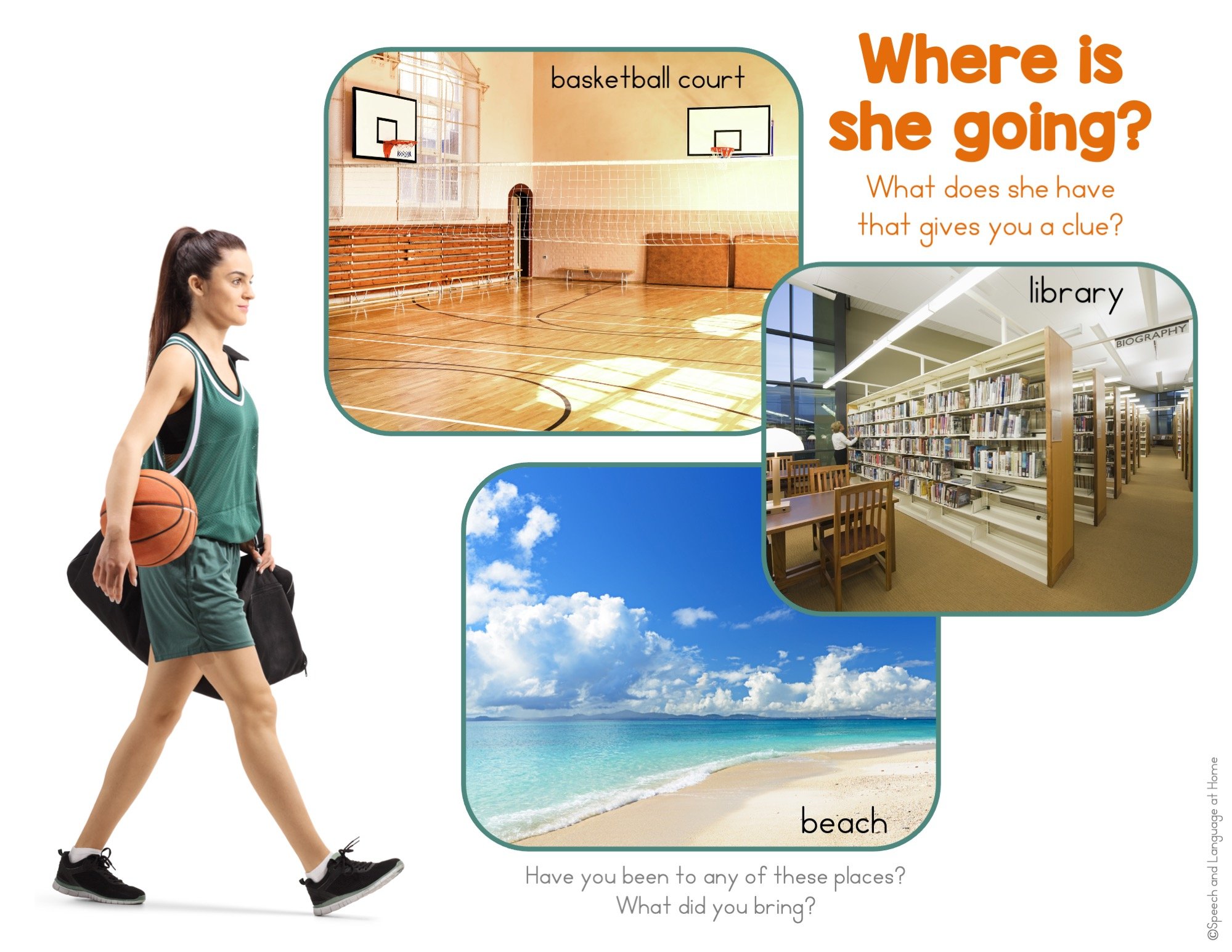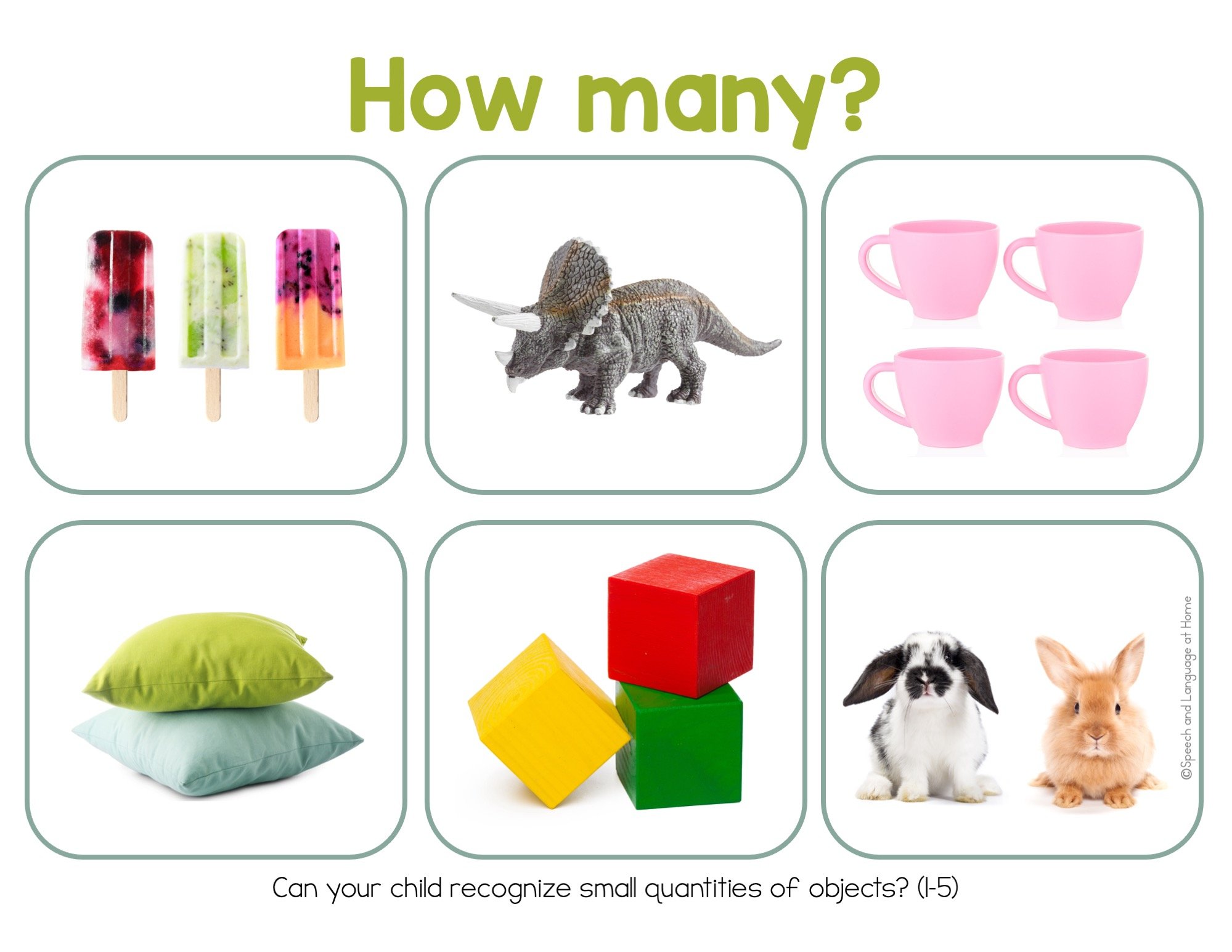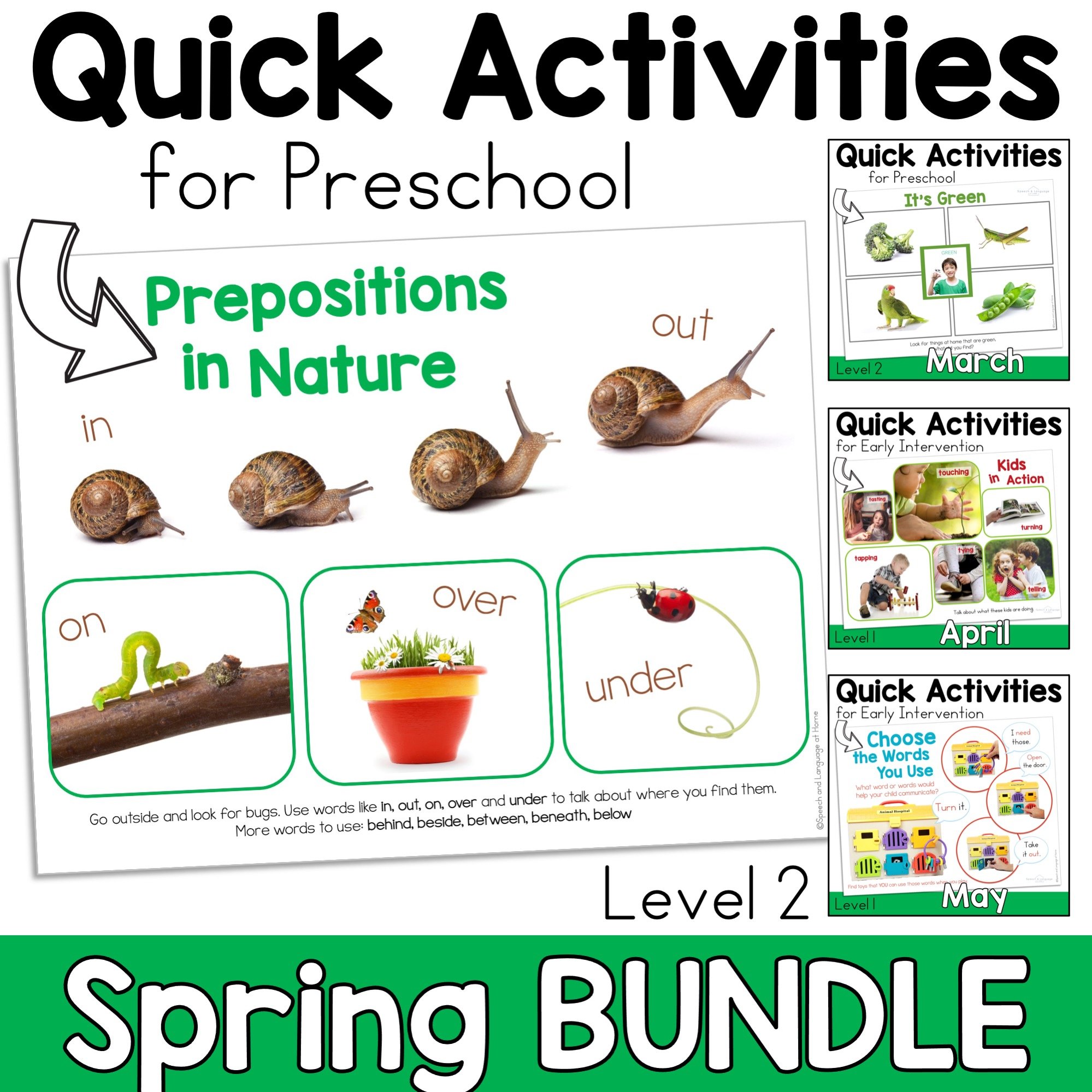March Preschool Speech Activities You Can Do At Home
Three activity ideas you can do with your preschooler to boost their speech and language skills.
1: Where is She Going?
Teach your child inferencing skills.
Inferencing is a conclusion reached on the basis of evidence and reasoning (Oxford Dictionary).
Point to the girl and ask your child “Where do you think she is going?”
If they guessed basketball court, ask them why they thought that.
Do they connect holding the ball with the basketball court?
Using clues like these in pictures can help later on with reading comprehension.
2: How Many?
There is a lot that can be learned with this simple activity.
The basic concept of quantity. When asked, “How many?” does your child know to answer with a number?
Understanding comparisons. Which square has the most? Which has the least?
Build vocabulary by having your child name the objects (pillows, blocks etc).
Using plurals. Do they use the plural -s sound at the end of the words with more than one? Listen for them say the /s/ sound.
Challenge: How can you do this at home with toys? During a snack? In the bath?
3: Alike and Different
Help your child learn how things are alike and how they’re different or same and different.
“These are both trains. This one is different because it’s a bridge.”
Give them some help by starting the sentence “These are the same, they’re both _____” and let them fill in the end.
This is a language skill that teaches kids to compare and contrast objects.
It can also help with reading. This is useful when kids are listening to sounds in words; ”Do those sound the same or different?”








